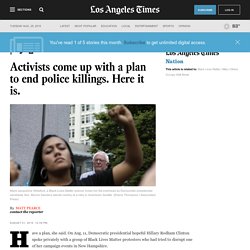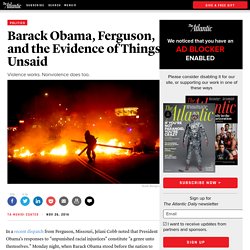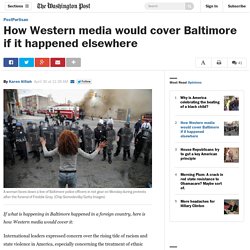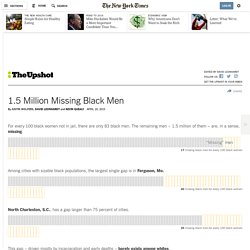

Report: Chicago police use excessive force and often treat people “as animals or subhuman” How License-Plate Readers Have Helped Police and Lenders Target the Poor. Maybe you’ve seen them attached to the trunks of police cruisers: cameras, mounted in twos or threes, pointed down at an odd angle as if at the feet of passersby.

But they’re not checking out your shoes—when switched on, they’re reading the license plates of every vehicle, parked or moving, that the cruiser passes. License-plate readers are an increasingly popular way for the police to find stolen cars and catch up with people with expired licenses or active warrants.
And when they’re not piggybacking on police cruisers, plate readers are often affixed to utility poles or freeway overpasses, scanning the passing traffic below. Police say the readers allow them to automate the important but cumbersome process of taking down license plates and checking them against law-enforcement databases. Those scans are stored in databases and can be searched by license plate number, turning up photos every sighting of a particular vehicle—including the time and location of each sighting.
Activists come up with a plan to end police killings. Here it is. Have a plan, she said.

On Aug. 11, Democratic presidential hopeful Hillary Rodham Clinton spoke privately with a group of Black Lives Matter protesters who had tried to disrupt one of her campaign events in New Hampshire. Clinton said raising awareness about inequality would not be enough -- there should be a specific vision to improve the lives of black Americans. "You're gonna have to come together as a movement and say, 'Here's what we want done about it,' " Clinton said, according to a video of the encounter, adding: "That's what I would love to have your thoughts about, because that's what I'm trying to figure out. " Interested in the stories shaping California? Sign up for the free Essential California newsletter >> On Friday, prominent black activists offered an answer that has been in the works for months, introducing a comprehensive policy platform to end killings by the police in the U.S. and said they will track and hold 2016 candidates accountable for their stances.
Barack Obama, Ferguson, and the Evidence of Things Unsaid. In a recent dispatch from Ferguson, Missouri, Jelani Cobb noted that President Obama's responses to "unpunished racial injustices" constitute "a genre unto themselves.

" Monday night, when Barack Obama stood before the nation to interpret the non-indictment of Darren Wilson for the killing of Michael Brown, he offered a particularly tame specimen. The elements of "the genre" were all on display—an unmitigated optimism, an urge for calm, a fantastic faith in American institutions, an even-handedness exercised to a fault. But if all the limbs of the construct were accounted for, the soul of the thing was not. How Western media would cover Baltimore if it happened elsewhere.
A woman faces down a line of Baltimore police officers in riot gear on Monday during protests after the funeral of Freddie Gray.

(Chip Somodevilla/Getty Images) If what is happening in Baltimore happened in a foreign country, here is how Western media would cover it: International leaders expressed concern over the rising tide of racism and state violence in America, especially concerning the treatment of ethnic minorities in the country and the corruption in state security forces around the country when handling cases of police brutality. The latest crisis is taking place in Baltimore, Maryland, a once-bustling city on the country’s Eastern Seaboard, where an unarmed man named Freddie Gray died from a severed spine while in police custody. Black Americans, the country’s largest minority ethnic group, are killed by state security forces at a rate higher than the white majority population.
International analysts predict the seeds of a so-called “American Spring,” fomented by technology. 1.5 Million Missing Black Men. For every 100 black women not in jail, there are only 83 black men.

The remaining men – 1.5 million of them – are, in a sense, missing. 17 missing black men for every 100 black women “Missing” men Among cities with sizable black populations, the largest single gap is in Ferguson, Mo. 40 missing black men for every 100 black women North Charleston, S.C., has a gap larger than 75 percent of cities. 25 missing black men for every 100 black women This gap – driven mostly by incarceration and early deaths – barely exists among whites. 1 missing white man for every 100 white women Figures are for non-incarcerated adults who are 25 to 54. In New York, almost 120,000 black men between the ages of 25 and 54 are missing from everyday life. They are missing, largely because of early deaths or because they are behind bars.